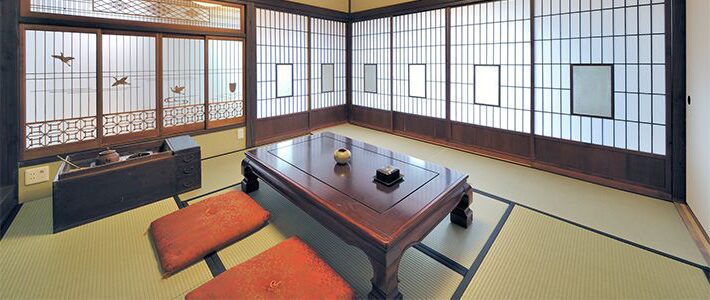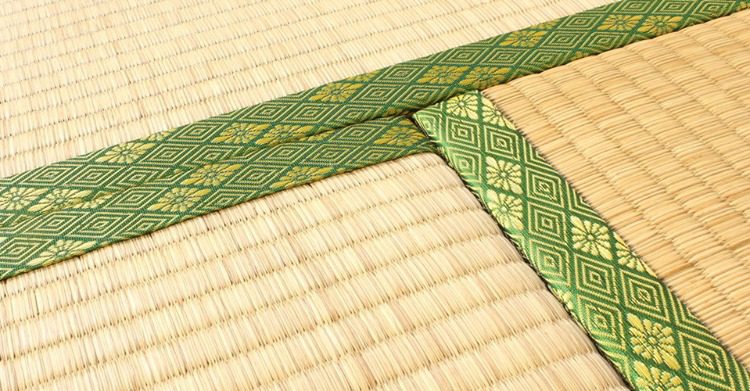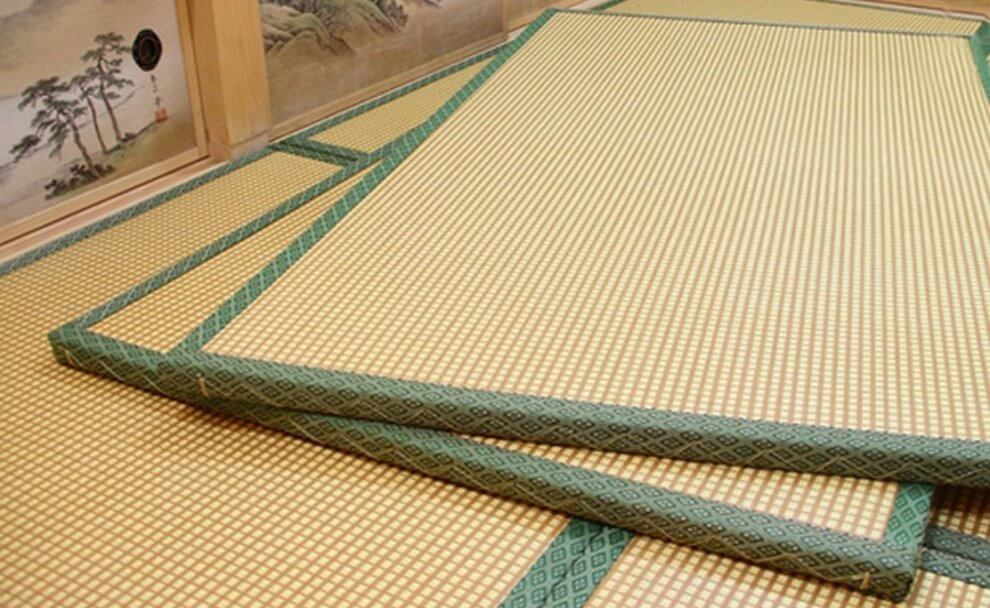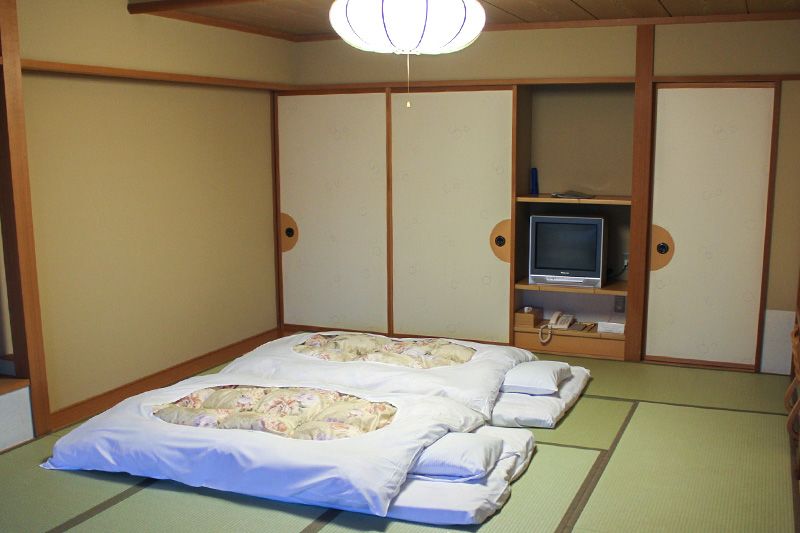
Table of Contents
Introduction to traditional Japanese mat
Tatami is a Japanese floor mat made by weaving stems of herbs. They are extended in Japanese homes, Japanese-style hotels and restaurants, Buddhist temples, and tea rooms.
You can sit on it directly or put the Japanese square pillow (Zapoton) and sit on it, and sleep over it after extending the traditional Japanese (Futon) bed, It is irreplaceable in the traditional Japanese way of life for the Japanese.
Tatami structure
Tatami is a traditional Japanese floor mat. In current Japanese homes, there are Japanese-style rooms (Wachitsu) and western-style rooms. Tatami is used in Japanese-style rooms. It is also used in tea rooms for preparing and serving green tea (Sado).
- Tatami … the traditional Japanese mat
Its standard dimensions are 182 centimeters in length, 91 centimeters in width, Typically 3 to 8 mats are used and used in each room. The Tatami is made by covering the bottom of the Tatami (Tatami Doku) at the top of the Tatami (Umuti Tatami), and by stitching the Tatami (Heri Tatami) border on its edges.
Dokka matrix in the form of a plate about five centimetres thick. It is made by placing rice straw on top of each other, then sewing and tightening it.
Because of the low supply of rice straw in recent years, and the ease in which moths and molds grow in it, polystyrene or soft-fiber boards are frequently used.
A belt is sewn to the edges called “Heri tatami”. This cloth is made of hemp or silk, and it is possible to choose different colors and shapes.
There are varieties of Tatami that do not have a Heri Kryukyu Tatami (a square Tatami mat that is half the size of a regular Tatami) and others.
Tatami size
The length-to-width ratio in Tatami is 2 to 1 and it is rectangular, but there is a square-shaped tatami. The size of the Tatami varies slightly depending on the region, as is the case in Kyoto, Osaka, Nagoya, Tokyo, etc., but a much smaller size is often used in the current apartments.
The number of rooms in Japanese homes is often indicated by the number of tatami mats. Japanese-style rooms are usually 3-room rooms (Tatami mats, which are 3 tatami mats), 4.5-air, 6-air, or 8-air.
Tatami History
Many elements of Japanese civilization moved from China, but the Tatami is a pure Japanese product.
The oldest Tatami still exists to this date, dating back to the mid-eighth century AD, and is preserved in Shoso-en treasury of the treasures of the Todaiji Temple located in the city of Nara.
In the Heian period (794-1185), tatami was used on the floor of the palaces of aristocratic families. Where they were placed on the wooden boards according to the need, and used as pillows and beds.
And spread from the end of the twelfth century until the mid-sixteenth century AD, and became the land of rooms fully furnished Tatami as is the case at the present time. It has been used by the common people since the mid-Edo era (1603-1868). It spread to all rural areas after the Meiji era (1868-1912).
Tatami at the moment
After World War II, the lives of the Japanese were greatly affected by the West, but the era of the Japanese houses that make up the Tachitsu furnished with Tatami Room continued for a long time.
Since 1990 the number of homes without a Wachitsu room has increased, and the popularity of laminate flooring has begun to spread.
- Tatami At The Moment
According to the Kumamoto Prefecture Production and Sales Promotion Association, which is considered the first prefecture in the production of breeding plants in all of Japan, the amount of demand for Omotai tatami decreased to a third from 45 million mat in 1993 to 14.9 million mat in 2012.
However, there are drawbacks to rooms with wooden floors such as feeling cold, sound frequency and so on, so I started to review how to use Tatami again recently.
Where new types of tatami are gaining in popularity, such as the tatami that is placed on the wooden floor, and the new-style tatami and multicolored, which uses raw materials other than the breed.
And the Tatami becomes a chair or a sleeping bed by simply placing a zapoton or photon on top of it, so that it is possible to live a simple life with little furniture.
If the raw materials from which Doku and Tatami Heri are made are taken into account, it is possible to obtain an organic decomposing tatami even if they are disposed of. Hence, it is an environmentally friendly building material.







